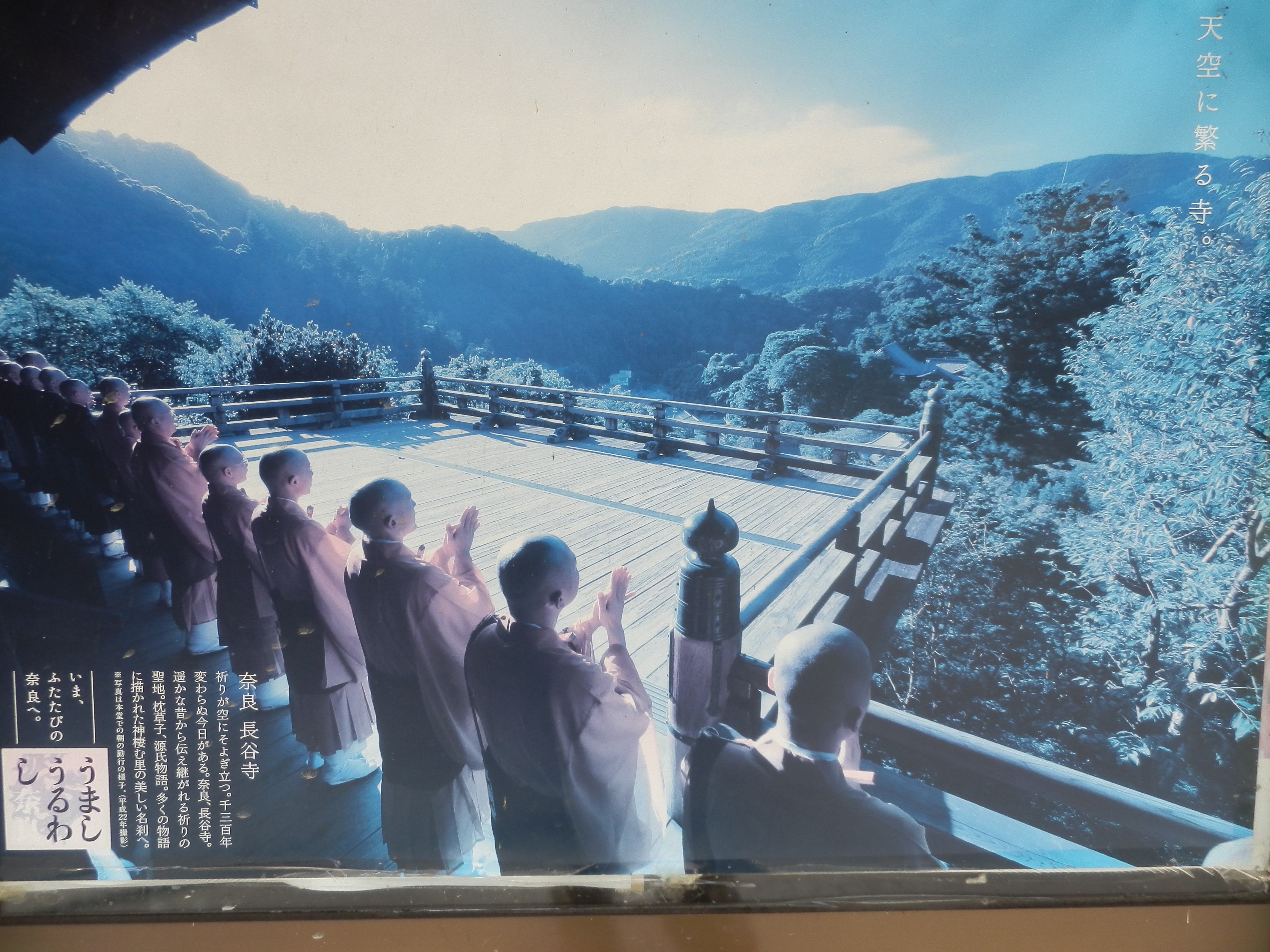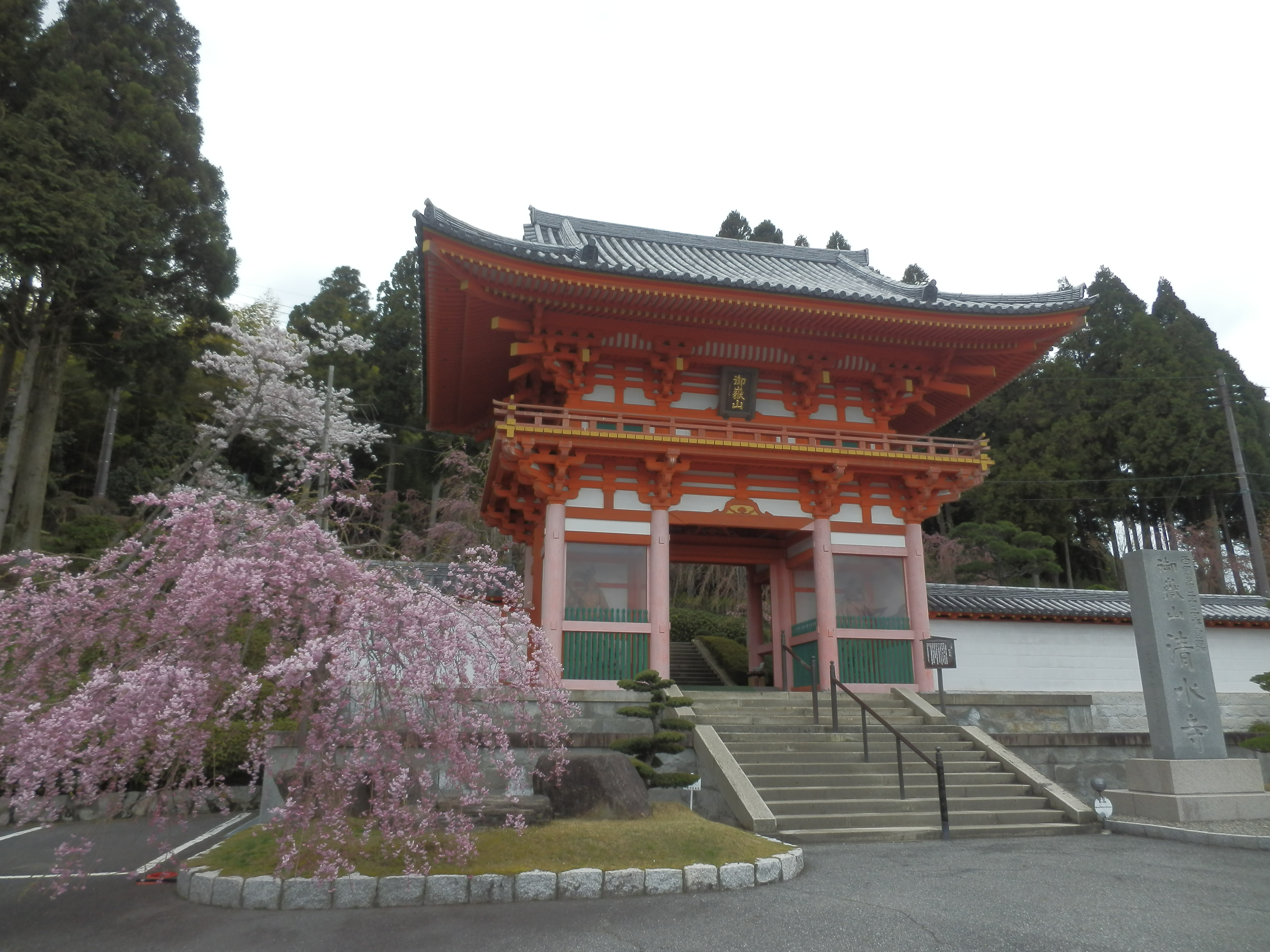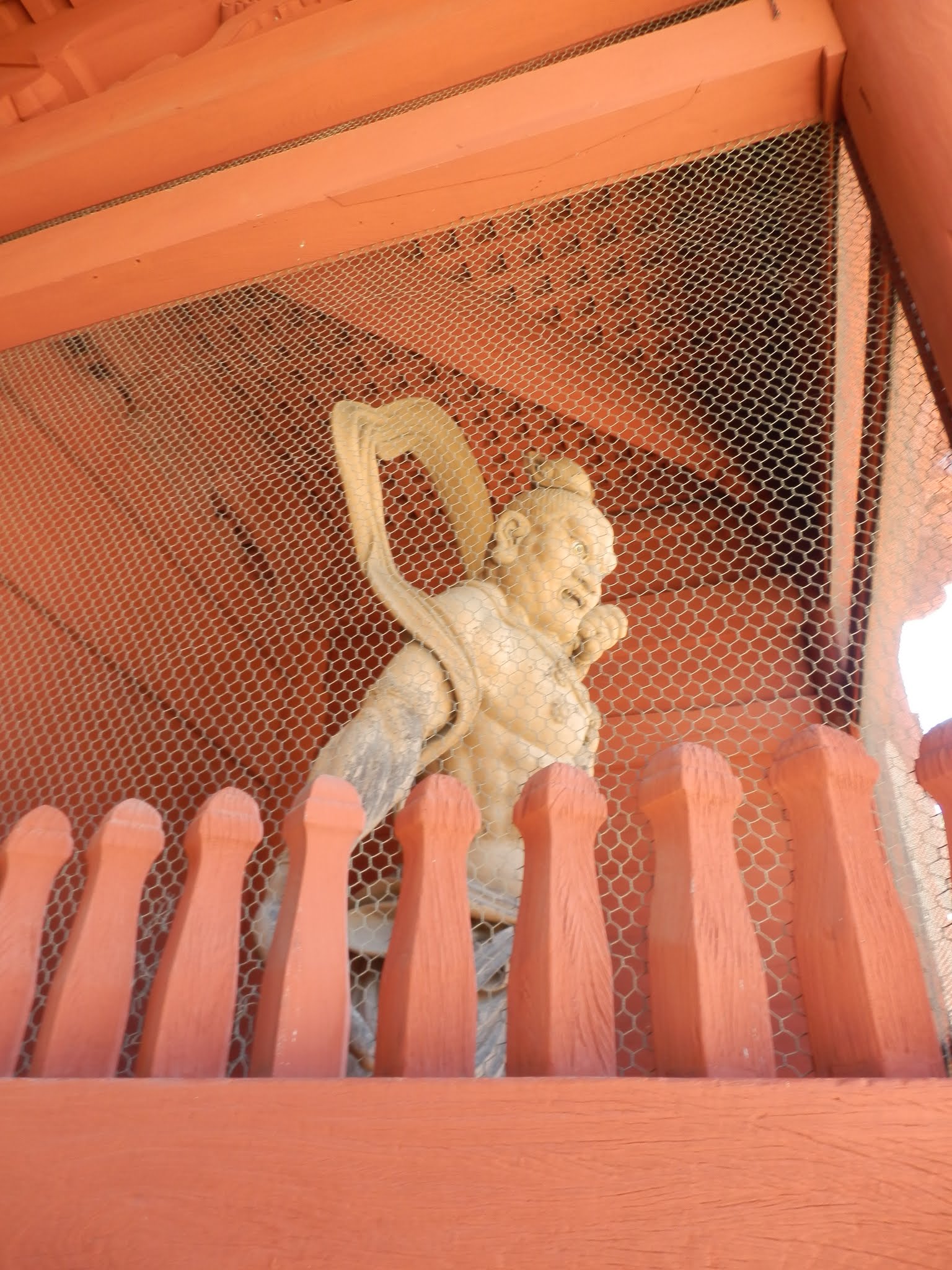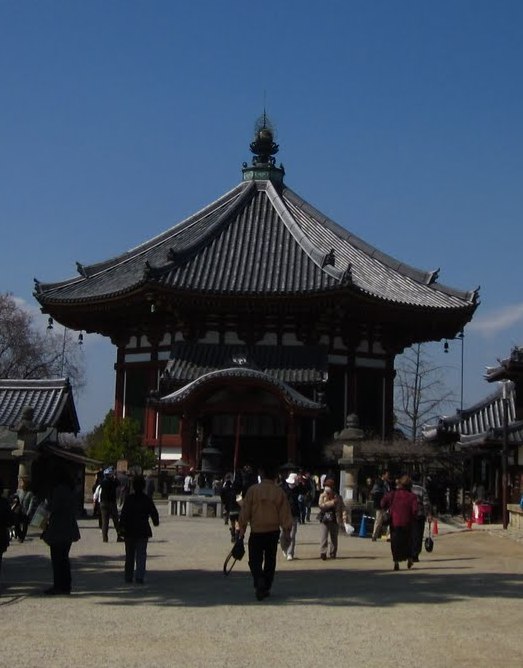Saigoku Kannon Pilgrimage: 長谷寺 Hasedera
Temple 8 of the pilgrimage is Hasedera, called the Flower Temple, a beautiful site in Nara Prefecture. My own trip to Hasedera was unique along my helter-skelter pilgrimage route: rather than simply wander around taking pictures and reading information off my phone, I actually spent the night in a ryokan in the monzen machi (the street leading up to an important pilgrimage site is often lined with shops and inns), then went to the 6:30 am service at the temple itself.
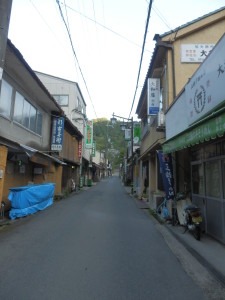 It was a Thursday at 6:30, so I was the only guest at this morning event. Every monk that passed me bowed and said good morning in a way that reminded me of being at school, and how the kids are always told to give a really energetic greeting. I couldn’t tell if the guy sitting just next to me explaining stuff was high ranking or just exempt from some of the niceties in order to take care of me, but he was never the first to say good morning. He handed me a book in which was written the text of the prayers and chanting, including in some parts these little notations for how the syllable was held and whether the note went upward or downward or squiggled.
It was a Thursday at 6:30, so I was the only guest at this morning event. Every monk that passed me bowed and said good morning in a way that reminded me of being at school, and how the kids are always told to give a really energetic greeting. I couldn’t tell if the guy sitting just next to me explaining stuff was high ranking or just exempt from some of the niceties in order to take care of me, but he was never the first to say good morning. He handed me a book in which was written the text of the prayers and chanting, including in some parts these little notations for how the syllable was held and whether the note went upward or downward or squiggled.
He showed me when the leader would speak and when the assembled monks on the area where I was sitting (and theoretically I too) would respond or be chanting. He explained that the second part would be chanting along to a drum beat from within the temple. Then we had a little extra time, so he told me about the temple building itself, the statue’s age and some other features of the place.
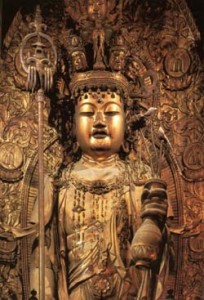 The Kannon image of Hasedera is another that is visible to visitors all the time. At ten meters high, it is the largest wooden image in Japan. Hase Kannon is said to grant all wishes, but especially those relating to healing, protection from danger and the bestowal of wealth and social status. In one hand she holds a vase and lotus for mercy, and Jizo’s staff in the other, symbolizing her ability to travel at will to any place to help those in need. There are over a hundred sub-temples in Japan with copies of this image, because of its fame for healing.
The Kannon image of Hasedera is another that is visible to visitors all the time. At ten meters high, it is the largest wooden image in Japan. Hase Kannon is said to grant all wishes, but especially those relating to healing, protection from danger and the bestowal of wealth and social status. In one hand she holds a vase and lotus for mercy, and Jizo’s staff in the other, symbolizing her ability to travel at will to any place to help those in need. There are over a hundred sub-temples in Japan with copies of this image, because of its fame for healing.
The chanting was both soothing and fast-paced, although my Japanese was not good enough for me to follow along very well. Â After the chanting, we did a sort of morning salutation prayer standing and facing the mountains visible in a few different directions from the main platform. The adjacent mountain is regarded as the divine embodiment of Amaterasu, the Shinto sun goddess, and is worshipped accordingly.
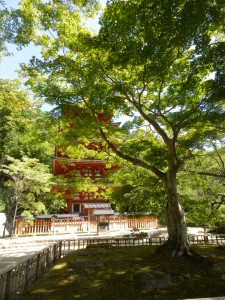 The monks at Hasedera were all very kind and friendly, and the temple itself seemed to present a calm, sweet feel, perhaps because of the prevalence of trees, flowers and neatly kept paths. There are 399 steps leading up to the main hall (hondo), with 33 lanterns hanging along the way and flowers planted beside the walk. There is also one large cedar tree said to have been left as a home for squirrels. The temple complex is fairly large, and the main platform outside the hondo was built much like that of Kiyomizu-dera and Engyo-ji, expansive but without nails.
The monks at Hasedera were all very kind and friendly, and the temple itself seemed to present a calm, sweet feel, perhaps because of the prevalence of trees, flowers and neatly kept paths. There are 399 steps leading up to the main hall (hondo), with 33 lanterns hanging along the way and flowers planted beside the walk. There is also one large cedar tree said to have been left as a home for squirrels. The temple complex is fairly large, and the main platform outside the hondo was built much like that of Kiyomizu-dera and Engyo-ji, expansive but without nails.
Getting to Hasedera can be a commitment, so if you make the trek, it might be worth it to stay for a little while (my ryokan treated me like royalty). There is also a bangai (番外) temple right at the bottom of the hill in the Monzen-machi. There are three bangai temples which you will find in the back of your pilgrim book; I confess to knowing very little about them, and only visited this tiny temple addition when the people at Hasedera informed me about it.
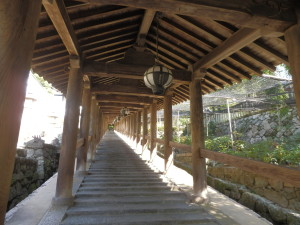 To get to Hasedera, take the Kintestsu Osaka line, get off at the Hasedera stop, and then it is a 15 minute walk.
To get to Hasedera, take the Kintestsu Osaka line, get off at the Hasedera stop, and then it is a 15 minute walk.
SacredJapan: www.sacredjapan.com
Hasedera website: http://www.hasedera.or.jp/
Bangai temple’s website: http://www.houkiin.or.jp/
Happy pilgrim trails!
Lemmon
